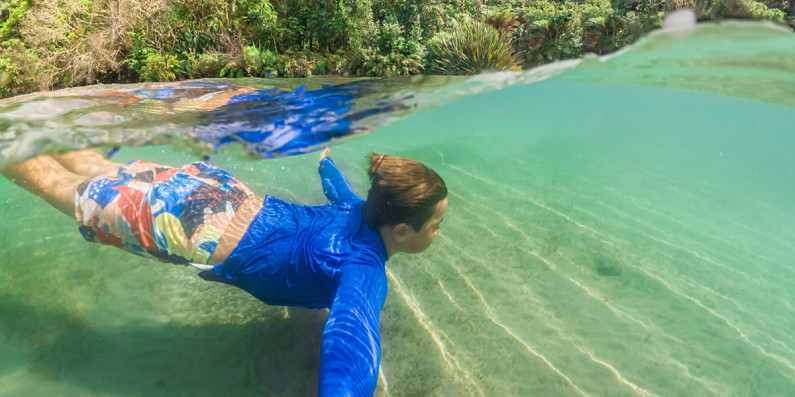
New report highlights pressures on Aotearoa New Zealand’s freshwater
Increasing pressures on lakes, rivers and groundwater are affecting water quality, ecosystems and people throughout Aotearoa New Zealand, according to a new report.

Increasing pressures on lakes, rivers and groundwater are affecting water quality, ecosystems and people throughout Aotearoa New Zealand, according to a new report.
Our freshwater 2023, published today by the Ministry for the Environment and Stats NZ, examines the most pressing issues in Aotearoa New Zealand’s freshwater bodies.
“Scientific evidence shows the health of freshwater ecosystems varies across the country, with impacts on the life they support," says Natasha Lewis, Deputy Secretary Joint Evidence, Data and Insights at the Ministry for the Environment.
“‘Our freshwater 2023’ is a comprehensive summary of the latest data and research about water, one of our most precious resources,” she says.
“While freshwater ecosystems and water quality are improving in some places and for some measures, others are worsening. Many lakes, rivers and other water bodies are under pressure, mostly due to the way we’re using land and water, and from the changing climate.
“Clean water and healthy waterways are important. When they’re degraded, it affects ecosystems, communities, people’s lives, and things that are important to New Zealanders from all walks of life.
“While the report doesn't specifically look at recent events such Cyclone Gabrielle that have severely affected communities and caught the country's attention, it does help make sense of what's happening more broadly," says Natasha Lewis.
Jason Attewell, General Manager, Economic and Environment Insights at Stats NZ says the report consolidates a number of environmental indicators about freshwater in all its physical forms from Aotearoa New Zealand’s two main islands.
“Stats NZ provides independent evidence-based data for this report to enable informed decision making and prompt discussion about the present and future,” says Jason Attewell.
The report brings together data and research to highlight pressures on the freshwater environment. These can cause or contribute to changes in the state of the environment, which have various impacts.
Key findings include:
Examples of the impacts include:
Waikato University’s Science Learning Hub is also producing resources for teachers and students to complement the official report
The Ministry for the Environment has also used the digital storytelling platform ESRI StoryMaps to create a new and engaging way to look at some of the issues raised in the Our freshwater 2023 report.
The StoryMap, Navigating our freshwater environment, considers what’s going on from the perspective of tuna (longfin eels). Tuna are a remarkable species that can live 70 years or more, travel thousands of kilometres, and are taonga to Māori and treasured by other people from many walks of life.
Using photos, videos and interactive maps, the StoryMap examines the challenges facing tuna throughout their lives as travel ki uta ki tai (mountains to sea) – and how those challenges affect aspects of the freshwater ecosystem, people, communities and sectors.
For further information and requests for comments about the report contact the Ministry for the Environment media team.
For technical information about the environment indicators contact the Stats NZ media team.
Under the terms of the Environment Reporting Act, reports are produced and published independently of any Minister of the Crown by the Ministry for the Environment and Stats NZ.